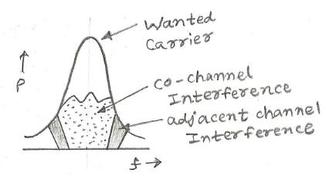NB-IoT Cell Reselection Time: Maintaining IoT Connectivity
Advertisement
In NB-IoT (Narrowband Internet of Things), cell reselection time refers to the time it takes for a mobile device (or IoT device) to switch from one cell to another. This process happens when the device moves out of the coverage area of one base station (cell) and needs to connect to a different base station (cell) to maintain a stable connection. This is a key aspect of mobility management in cellular networks like NB-IoT, which typically operates in a stationary or low-mobility context, such as in asset tracking, smart metering, or industrial monitoring.
Factors Affecting Cell Reselection Time in NB-IoT
-
Signal Quality and Reselection Criteria:
- The device performs cell reselection based on certain parameters such as signal strength, reference signal received power (RSRP), or signal-to-interference plus noise ratio (SINR).
- The device will attempt to reselection to a new cell if the signal quality of the current cell drops below a threshold or if a neighboring cell provides better signal quality.
-
System Parameters:
- Cell Reselection Timer: Once a better cell is detected, a timer may be used to wait for confirmation that switching to the new cell will provide a stronger or more stable connection.
- The network uses quality of service (QoS) rules and specific NB-IoT parameters to control reselection behavior, ensuring the device does not constantly switch between cells, which would result in unnecessary signaling and energy consumption.
-
Mobility Optimization:
- NB-IoT devices generally do not require high mobility handling because they are mostly designed for stationary or low-mobility applications. Therefore, the cell reselection process in NB-IoT is optimized to work efficiently with minimal latency.
-
Low Power Consumption:
- Since NB-IoT is designed for low-power, long-range applications, the cell reselection process is carefully designed to minimize power consumption. For instance, the device may remain in a disconnected idle mode for extended periods and only perform reselection when necessary, using efficient algorithms for optimal power usage.
Typical Cell Reselection Time in NB-IoT
The cell reselection time in NB-IoT can vary depending on network conditions, but it is generally in the range of several hundred milliseconds to a few seconds. This is faster than older systems like GSM but still slower than high-speed LTE or 5G networks. However, in most practical IoT applications, the reselection time in NB-IoT is sufficient because these devices are expected to be stationary or have low mobility.
Key Points
- Cell reselection ensures a continuous, stable connection when a device moves from one cell to another.
- NB-IoT devices, being typically stationary or with very low mobility, do not require as quick cell reselection as other mobile networks (like LTE).
- Cell reselection time in NB-IoT typically ranges from 200 ms to several seconds, depending on the quality of the signal and the mobility scenario.
- Optimizations for low power consumption are crucial in reducing the device’s energy usage during cell reselection events.
Summary
Cell reselection time in NB-IoT ensures that devices can efficiently and seamlessly switch between cells when necessary while maintaining low power consumption and minimal delay, which is important for IoT applications where long battery life and reliable coverage are critical.
 RF
RF

